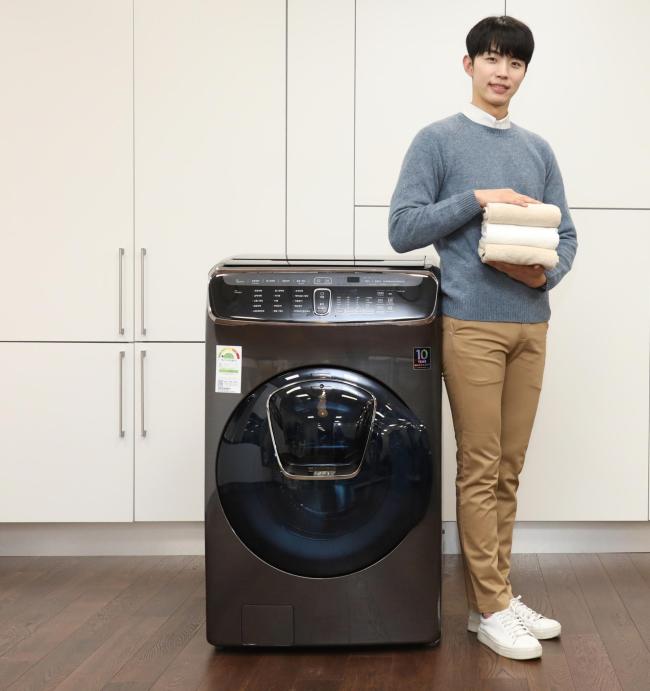South Korean washer exports to the United States plunged 45.4 percent on-year as safeguard measures took effect, an international traders organization here said Sunday.
The data released by the Korea International Trade Association showed outbound shipments standing at around $30 million in the first three months of 2018 compared to $55 million a year earlier.
Under the safeguard measure that took effect on Feb. 7, 20 percent tariff have been slapped on the first 1.2 million imported washers in the first year and a 50 percent tariff on machines beyond that number.
KITA said that while higher import duties affected export to some extent, the biggest reason for the sharp decline is due to moves by South Korean manufacturers to assemble washing machines in the North American country to sidestep the safeguard measure.
Samsung Electronics Co. said it started production at its South Carolina plant in January.
In addition to exports to the leading consumer market, the latest trade data showed, overall global shipments of South Korean washer contracted 35.1 percent on year in the first quarter to $164 million vis-a-vis $252 million a year earlier.
“The drop is caused by local companies unable to find other markets and stiffer competition from Chinese rivals,” the trade agency said.
It said exports had been falling since 2011 and that the US safeguards accelerated the trend.
In regards to solar panels, which were also affected by the latest trade protectionist action, data showed a slight increase in exports.
From January through March exports to the United States reached $211 million up 4.3 percent from $202 million last year.
“In the US there is solid demand for South Korean made panels that are of higher quality than those imported from China,” a local source said. He, however, said that numbers will likely fall going forward as safeguard measures start to bite.
Washington has slapped 30 percent tariffs on foreign solar cells and modules in order to better protect its own manufacturers.
Global export numbers, meanwhile, jumped 25.6 percent on-year to $1.37 billion, a clear indication that more people are favoring eco-friendly ways of generating electricity.(Yonhap)


